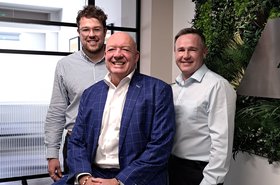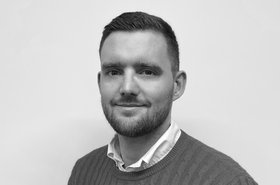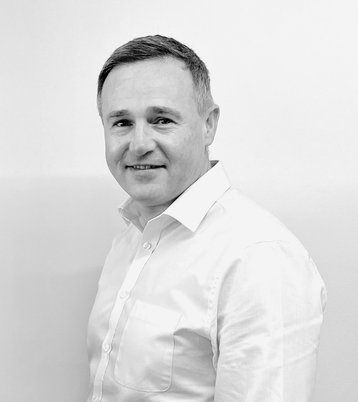The world’s appetite for data shows no signs of abating. Indeed, the demand for data center facilities continues to explode, thanks to power-hungry applications such as virtual reality, artificial intelligence, and smart vehicles.
A large concentration of these facilities are centered around the so-called “FLAP-D” cities – Frankfurt, London, Amsterdam, Paris, and Dublin. But with finite power resources in these locations, coupled with growing demands for decarbonization of the industry, these classic locations are reaching their capacity to meet the needs of citizens on top of the explosion in data processing.
DataCenter Dynamics sat down with AVK sales director Dean Bradshaw to examine the scale of the problem, and the new cities vying to be at the center of the solution. But what exactly is the problem we’re facing?
“Power constraints are worsening, typically where data centers are built. They're built in clusters, due to latency and fiber locations. If we look at areas that have been saturated with data centers over the last few years, they have met capacity on the local grid infrastructure. The demand is never stopping, but we're using the grid, and that’s not an infinite source of power.
“There are massive upgrades that need to happen to allow them to build there. Areas such as the UK and Ireland saw it very early on. Ireland was probably the first through the door and became the pioneer and testbench for microgrids and alternative power solutions, but now we’ve got clients in Frankfurt, Amsterdam, and all the major data center hubs struggling for grid connections.”
As the AI revolution beckons, it has the potential to compound the problem, but Bradshaw points out that where there’s a crisis, there’s often an opportunity.
“An interesting thing about AI is it's less dependent on location – less geographically constrained. That opens up flexibility on grid capacity, with people exploring new areas. You see a lot of potential data centers popping up in the Greater Manchester area, which is an untapped resource. Further afield into Europe, AVK is actively delivering solutions outside of the FLAP-D region in Madrid, Milan, Vienna, Prague, and Zurich.
"But even then, it's all about finite grid power. They might find 100 megawatts somewhere, but with the sheer scale of the data centers being built now, I struggle to see how the grid will keep up with it. I think you'll see a blend of traditional build-to-suit data centers with UPS, diesel generators, or HVO generators, and a mixture of microgrids as well, based on location.”
While all this is great news now, Bradshaw warns that in reality, we’re kicking the can down the road.
“If you look at new territories, you notice it when you start adding multiple data centers. You start looking at half a gigawatt of power required in these new areas. That power is all required over the next 12 to 18 months – so although they’ve got power now, they will eventually hit the same wall as everyone else because the infrastructure in these areas just isn’t there, because it’s never been a requirement.”
With increasing regulation on emissions, as well as companies’ own targets, the dispersal of data centers beyond areas like FLAP-D has an extra welcome side effect of an industry looking for more environmentally sustainable build sites.
“It’s nice to see the data center market questioning how they build data centers and looking beyond the need for a grid connection. We need HVO engines and we still need UPS. We are seeing some out-of-the-box thinking in alternative energy sources.
“Unfortunately, the timing isn't perfect because the actual solution to solving 100 megawatts, 200 megawatts, or even more, is with renewables – and the technology isn't just there yet, though in the future it will be. I don't see a quick solution to grid constraints. We’re working with stop-gaps, in this intermediary period but it isn't necessarily the full renewable push everyone wants to see because it just isn't there yet.”
So if sustainable energy isn’t mature and the problem is there, now, what does Bradshaw see as our stopgap?
“I know that’s still a fossil fuel, but I think harnessing natural gas is probably the most tangible, realistic solution that's right here, right now. There are renewable benefits to it, you can manage the carbon at the source, trade the asset based on carbon, and use it against the grid – so your net carbon usage comes down, I know, it's not the idea that everyone wants to see – and it's probably not the thing that the media wants to see. But it's a realistic intermediate point.
“Reciprocating engines and turbines can already run on a hydrogen blend. Over the next three or four years, we can expect to see fully hydrogen-fueled products, which involve a simple on-site upgrade. But the biggest issue isn’t the technology, it's the actual fuel source. You can't get enough green hydrogen to run a hyperscale data center, because 80 percent of hydrogen comes from fossil fuel. All you’re doing is moving the pressure point, and you're just kicking the carbon and emissions down the chain.
“We, as an industry, can't take the view that out of sight is out of mind. Owning your microgrid, even if it runs on fossil fuels means you’re managing the carbon offsets – you're actually in control of your destiny. Everyone can say they want renewables, but we need to be realistic about the stages to get to a completely renewable solution.”
One easy win in the move for sustainability is with backup generators. Most diesel generators are capable of using hydrogenated vegetable oil (HVO) instead of, and even in combination with diesel fuel. The upside is that it is a proven alternative, with performance that compares to traditional diesel. The downside is that production rates are still small, while distribution remains patchy, and thus it remains more expensive than fossil fuels. However, AVK is working on the solution.
“When it comes to HVO, or any alternative fuel, the biggest fear for clients is availability, especially in some emerging markets, where there is no distribution. We’re working closely with Shell, assisting them in their roadmap to build distribution centers.
“We've cut out the middleman by working with Shell, who are already producing and purchasing alternative fuels in large quantities. It will give guarantees to smaller businesses that can’t afford to have contracts directly with the producers. It shows the sheer size and scale of investment that Shell is putting into their renewable fuels.”
But does Bradshaw see HVO as the ultimate solution or just the beginning?
“I think HVO is the interim. Over the next four or five years, we’ll see some really interesting fuels become available. That's the greatest thing about having our partnership with Rolls Royce because they have their jet engine side as well. You can imagine the amount of pressure to reduce the emissions around air travel, so they're actively leading the way in alternative fuels for their jet engines, which trickles down into the types of stand-by engines we’re procuring, and so we get a good insight. We'll always remain ahead of the curve, because of the demand that the world puts on big players like Rolls Royce.”
A central plank of AVK’s plans for meeting energy demands comes from the increased use of microgrids – moving generation from the grid to a locally managed alternative. Bradshaw sets out the advantages of this strategy.
“You're essentially controlling your destiny. You have assets on site, and a say in how it's operated, which means instead of potentially going offline, perhaps with no warning, you're in complete control. Plus, with dual-fueled engines that are running on gas and HVO, you have backup fuel. So if they trip the gas line, you can switch to HVO backup on the same engine, and suddenly your reliability has gone up tenfold.”
With an average time from concept to completion of a microgrid being around 12-18 months, there are a lot of opportunities to work with partners in the process, but AVK is a platform agnostic company, preferring to find personalized solutions and perfect partnerships on a client-by-client basis.
“We're not square peg round hole, it's a consultative process. It's not about the selling process, we're working with the clients to understand exactly what their needs are. We have this “war chest” of different products and different partnerships so we can have transparency on whether it's the best solution, and we're not trying to say – for example – that medium-speed reciprocating gas engines are better than dual-fuel. We can show the design and make them part of that decision which allows them to be confident to buy into the scheme.”
But how involved does AVK get? For example, do you deal with the utility companies, or is that something done client-side?
“It depends on what role the client would like. We can offer a solution, where we just build, which they fund and operate directly or with a subcontractor, or we can offer a full wrap of our own, operate the plant, and fund the plant. If we're funding, owning, and operating, we will take care of all of the applications, and all the planning – it depends on the client's route to funding and how they want to deploy the scheme.”
With plants that are owned and operated by AVK, the key phrase is “Intelligent Power Management”. Bradshaw explains what this ethos means for the client.
“We would have 24/7 cover on-site with our engineers alongside our partners who have expertise centers dotted around Europe, where they're actively monitoring units. They can see if turbo pressure has gone up slightly, give a feedback report to our on-site engineers, and we'd be able to prevent any further issues or get in with a fix before that turbo fails.
“We can diagnose and sort it – reducing weeks of downtime. We might have to stop the engine for three or four hours, but having that insight might prevent a catastrophic failure that would knock out the system for three or four weeks. The big piece for us is proactive maintenance.”
In the past, data center operators have proved somewhat possessive over their vision, creating challenging conditions for outside agencies such as AVK, to come in with ideas that can put best practice over the original plan. But times change and these days, having an outside agency bringing expertise to the table is more welcome than ever.
“I think we're past the point of everyone just demanding what they think they need, I think people are listening. That pressure will just grow as the sustainability aspect brings larger constraints. It's a really interesting space at the moment, there are so many different technologies and opportunities, and different ways of thinking.
"It's engaging the markets, and bringing very intelligent people with it. Over the last eight years or so, the focus has been on, quicker, and cheaper, whereas now we can put data centers to work solving the bigger problems around sustainability and grid availability. I'm looking forward to seeing what technologies and solutions come out, with AVK standing at the forefront.”
So, with that in mind, what does Bradshaw see the sustainable data center market of the future looking like?
“We're breaking sustainability down into three core pillars – environmental, social, and, of course, financial. For the environmental aspect, as I said, I don't think the industry has the answer to what that looks like, in terms of fuels and so on. It's an ever-evolving exam question that needs answering.
"Social responsibility looks at how we help the local environment – the footprint that we're leaving and the input into the local community, and that's something that I believe is overlooked as an industry. We go and build massive data centers worth hundreds of millions, and we need to be asking what the local community thinks, and what we bring to them. It's an area that over the next year or two, we’ll be looking at, massively – especially in emerging markets.”
In short, the message is that, as an industry, we need to start looking outwards, instead of inwards. Data centers are becoming an ever more prevalent part of the landscape, and that means being part of the community, not just another building on the side of the road.
“It may be influencing a school, going to talk about construction, or donating books. Perhaps it could be assisting with funding of community areas such as swimming pools or parks. There's so much money in the data center market that, if everyone had a little focus on what else can we do for a small local town where we’ve built a facility, we give a better outcome to that local community – at least we've left a good footprint. That's where I think the market needs to be.”
To find out more, please visit www.avk-seg.com.
More from AVK SEG
-

Sponsored The realistic route to Net Zero
Decarbonization and Net Zero are journeys, not projects. AVK’s Ben Pritchard maps out the way, calling at HVO, on-site generation and microgrids
-

New appointments for AVK accelerate European expansion
New appointments for AVK see the family-run business go from strength to strength
-

Sponsored Powering the future
Introducing innovative solutions for meeting the energy demands of data centers across Europe


